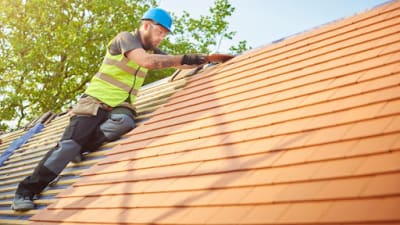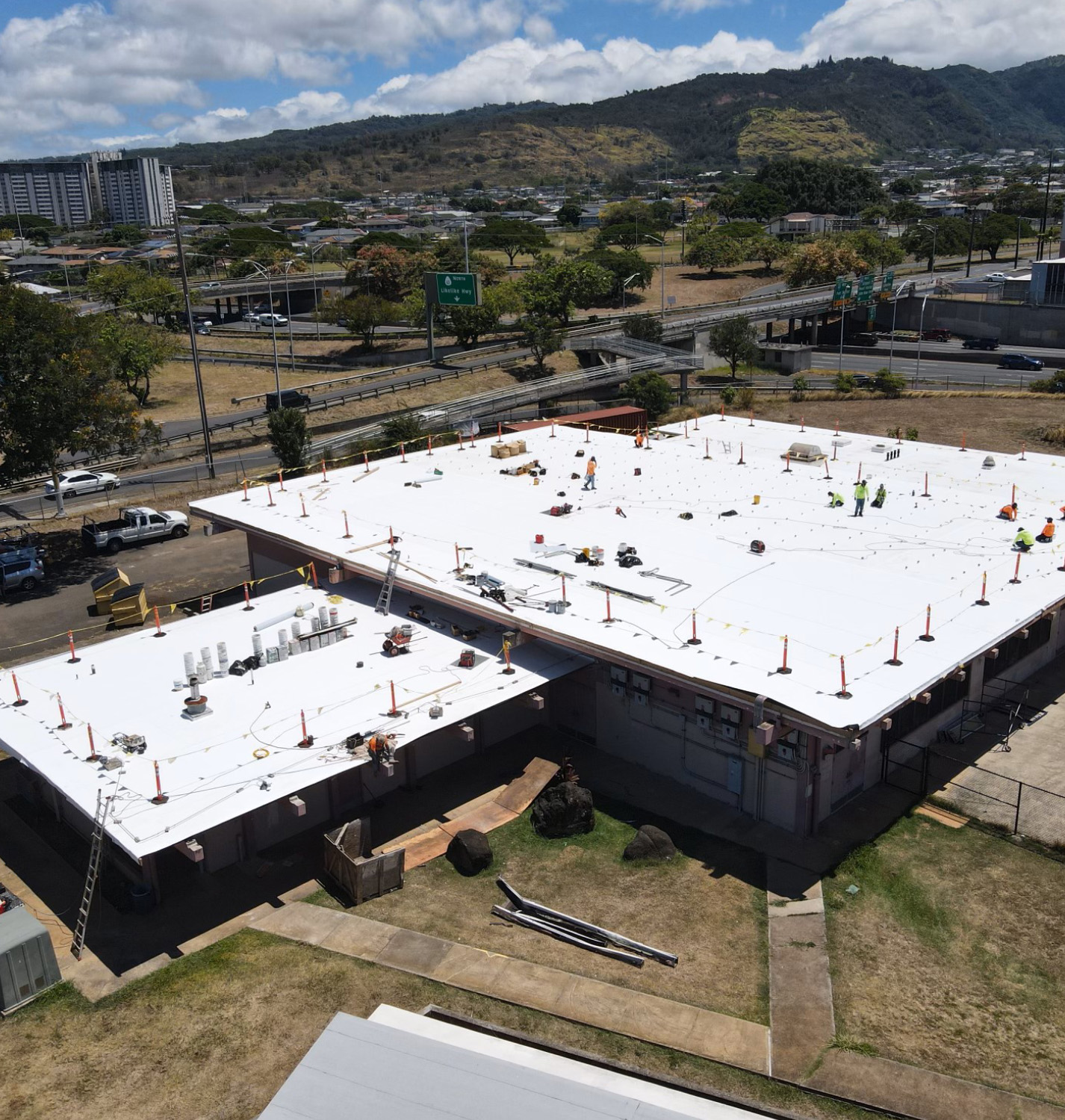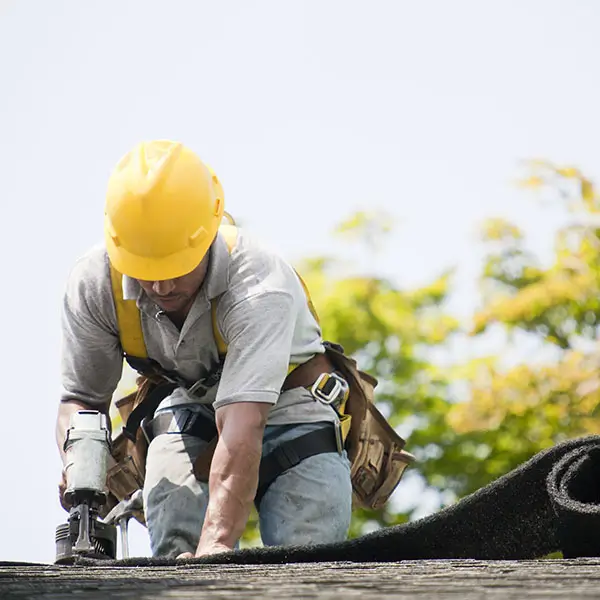Quality service and skill are key when hiring roofing contractors oahu for your building.
Quality service and skill are key when hiring roofing contractors oahu for your building.
Blog Article
Uncover Typical Roof Covering Problems and Exactly How to Address Them Successfully
When it involves your roof covering, spotting problems early can conserve you time and money. You might notice water spots on your ceiling or split roof shingles during your routine checks. Overlooking these indicators can result in bigger issues down the line. Comprehending how to recognize and resolve these common roofing problems is necessary for preserving your home's stability. What specific steps should you take to assure your roofing remains in top problem?
Identifying Roofing Leaks and Their Causes

Following, examine your roof from the exterior. Try to find missing or fractured ceramic tiles, rusted flashing, or harmed rain gutters. Pay attention to locations around chimneys, vents, and skylights, as these prevail leakage sources. If you spot any one of these issues, it's vital to resolve them quickly.
During hefty rain, observe your roofing for any merging water or drips. This can reveal leakages that could not show up throughout dry problems. By staying attentive and frequently inspecting your roofing, you can capture leaks early and shield your home from further damages.
Dealing With Missing or Harmed Tiles
When you discover missing out on or damaged roof shingles, it's necessary to act swiftly to prevent additional concerns. You'll intend to identify the degree of the damages, fix any missing roof shingles, and take into consideration preventive maintenance ideas to maintain your roof in top shape. Taking these actions can conserve you time and cash down the roadway.
Identifying Roof Shingles Damage
Although tiles are made to hold up against the aspects, they can still experience damage over time, leading to potential leakages and costly repair work. To determine shingle damages, begin by examining your roofing system for missing out on, split, or curled shingles. On a regular basis monitoring your roofing, especially after extreme weather, can help you catch concerns early and maintain the integrity of your home.
Repairing Missing Tiles
After identifying tile damage, the next step is resolving any missing or damaged roof shingles without delay to stop additional concerns. Beginning by examining the affected area and figuring out just how many shingles need substitute. If you can, climb up onto your roof safely, wearing suitable gear. Eliminate any type of broken roof shingles very carefully making use of a lever. As soon as you have actually gotten rid of the location, slide in the brand-new tiles, guaranteeing they straighten with the existing ones. Safeguard them with roof covering nails and use roof covering adhesive for included security. Don't fail to remember to seal the edges to stop water infiltration. If you're uncomfortable with the repair, it's a good idea to call a professional. Doing something about it quickly will help keep your roof covering's stability and expand its lifespan.
Preventive Upkeep Tips
Exactly how can you keep your roof in top shape and stop tiles from going missing out on or getting harmed? Inspect your roof at least twice a year and after serious weather condition (roofing materials hawaii).
Keep rain gutters clean and without particles to assure appropriate water flow and protect against roof shingles damages. Trim overhanging branches to decrease the risk of them scratching against your roofing throughout storms.
Think about using a protective sealant to prolong your tiles' lifespan. Lastly, if you see any type of issues, address them immediately to stay clear of costly repair services later on. Taking these safety nets can save you time and money while ensuring your roofing stays sturdy and reputable.
Recognizing Roof Covering Air Flow Issues
Correct roof covering air flow is essential for maintaining the longevity and efficiency of your roof system, as it helps regulate temperature and moisture levels in your attic room. Without ample air flow, you might deal with concerns like extreme warm build-up, resulting in premature roof shingles damage, or enhanced humidity that can cause mold development and timber rot.
To analyze your roof covering air flow, check for signs of overheating, such as deformed tiles or a hot attic. Look for obstructed vents, which can limit air flow and trap warmth. You must ensure your intake and exhaust vents are balanced, permitting appropriate air exchange.
Resolving these problems promptly can safeguard your roof covering and save you from costly repair services down the line. Stay positive in maintaining your roofing's ventilation to secure your home.
Dealing With Roof Covering Moss and Algae Growth
While you might appreciate the all-natural appearance of moss and algae on your roofing system, these microorganisms can lead to substantial problems if left unattended. Utilize a soft-bristle brush to delicately scrub away the moss and algae, being cautious not to damage your roof shingles.
Following, take into consideration using a specialized roof covering cleaner or a combination of water and bleach to eliminate staying spores. Routine assessments and maintenance will help avoid moss and algae from returning, ensuring your roofing system stays in excellent shape for years to come.
Repairing Storm Damage and Wind Issues
After a storm, it's essential to examine your roofing system for damages triggered by high winds and heavy rainfall. Start by checking for missing out on or broken tiles, as these are typical casualties.
Look for any type of see this sagging locations, which might show water build-up or structural problems. If you find any kind of debris, like branches or leaves, eliminate them very carefully to avoid more damage. If your gutters are obstructed, clear them to ensure proper drainage.

For little fixings, you may manage it yourself, however do not hesitate to call an expert for extensive damage. Bear in mind, acting quickly can save you from larger troubles down the line, so take that assessment seriously and deal with any kind of concerns immediately.
Recognizing Indications of Architectural Damages
How can you tell if your roofing is dealing with architectural damage? Start by trying to find noticeable sagging or dips in your roofline. These indicators show that the roofing materials hawaii underlying structure may be jeopardized. Next, look for fractures or voids in the wall surfaces or ceiling, as these can signify shifting or resolving due to roof issues. Take notice of leaks or water spots, particularly in areas where the roofing satisfies wall surfaces. If you observe missing out on or broken roof shingles, it's vital to resolve them promptly, as they can reveal your roof covering to more damages. Examine your attic for any indicators of daytime glimpsing with, which could mean your roof covering's honesty is at danger. Pay attention for uncommon creaking or popping sounds, as they might show structural stress and anxiety. If you see any one of these signs, it's time to speak with a roof covering specialist for a complete evaluation.
Routine Maintenance Tips for Long Life

Regular Evaluations Significance
Because a roofing is your home's very first line of defense against the elements, regular inspections are important for maintaining its integrity (roofing materials hawaii). You ought to check your roof covering a minimum of two times a year, ideally in spring and fall, to capture possible problems early. Search for missing or harmed tiles, signs of leaks, and any kind of debris that could create problems. Pay close attention to locations around smokeshafts, vents, and flashing, as Your Domain Name these prevail vulnerable points. If you observe anything unusual, do not wait to call an expert for a thorough analysis. Staying up to date with these assessments can stop expensive repair services down the line and lengthen your roofing system's life-span, ensuring your home remains protected for several years ahead.
Correct Gutter Upkeep
Routine roof covering examinations naturally lead to the importance of correct gutter maintenance. Clean your rain gutters at the very least twice a year to stop clogs from fallen leaves, dust, and debris. If you reside in a tree-heavy location, consider examining them more frequently. Utilize a sturdy ladder and use gloves while getting rid of the build-up. Likewise, check your rain gutters for leakages or rust; they can trigger water damages to your roofing system and home. See to it downspouts direct water away from your foundation to stay clear of flooding. Setting up gutter guards can lessen particles build-up and minimize maintenance time. Check for proper incline; gutters should incline towards the downspouts to ensure ideal water drainage. By following these pointers, you'll expand your gutters' life expectancy and protect your roofing system.
Frequently Asked Concerns
Just How Can I Select the Right Roofing Material for My Home?
To choose the right roof product for your home, think about climate, toughness, and visual appeals. Study alternatives like asphalt tiles, metal, or ceramic tile. Think concerning upkeep demands and spending plan to find what fits you ideal.
What Are the Indications I Need a Roofing Substitute Rather Than Fixing?
If you observe extensive leakages, drooping, or missing roof shingles, you might require a roof replacement. If your roof covering's nearing its life-span or has considerable damages, it's time to contemplate a complete replacement instead of just repairs.
How Often Should I Arrange Expert Roof Covering Inspections?
You should arrange expert roof covering examinations at the very least yearly, ideally in spring or autumn. This assists capture potential issues early, guaranteeing your roof covering remains in excellent condition and extending its lifespan.
Can I Install a New Roof Over My Old One?
You can set up a new roof over your old one, however it's vital to examine neighborhood building codes and guarantee the existing roofing's problem is audio. This approach can conserve time and money, but take into consideration possible problems.
What Is the Typical Life-span of Various Roofing Materials?
The average life expectancy differs by product: asphalt tiles last 15-30 years, steel roof coverings can last 40-70 years, while tile or slate roofings might surpass half a century. Pick wisely based on your environment and budget plan.
Verdict
By remaining watchful and attending to usual roof covering issues without delay, you can protect your home and prolong your roof covering's lifespan. With a little routine maintenance, you'll not just protect your financial investment but likewise delight in tranquility of mind knowing your roofing is in leading form.
Report this page